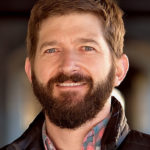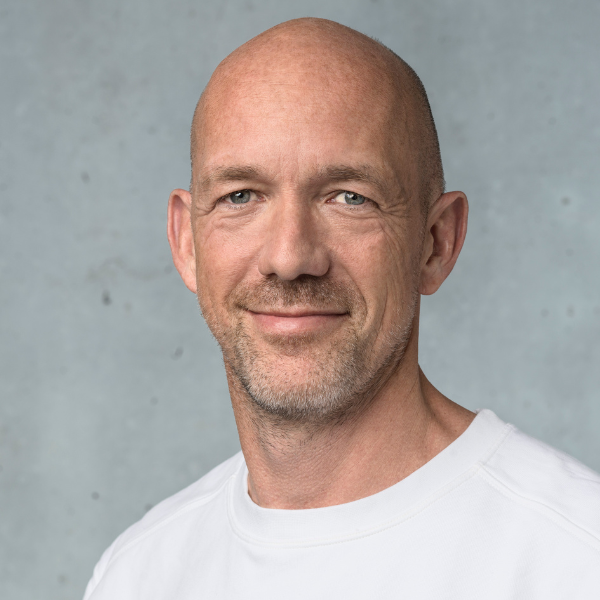
For over a decade, Bob Sutton — a professor in Stanford’s Department of Management Science and Engineering — has been obsessed with problems of scale.
In the preface to his 2014 book “Scaling Up Excellence,” co-written with Huggy Rao of Stanford’s Graduate School of Business, Sutton explains that their interest in scaling emerged as they led a Stanford-based management education program. Executives, they found, could always identify pockets of excellence in their organizations. “What drove them crazy, kept them up at night, and devoured their workdays was the difficulty of spreading that excellence to more people and more places,” they write in the preface to their book.
“We’re focusing on diffusing good ideas across networks and organizations.”
– Bob Sutton
Recently, to extend the impact of this work around scaling in a more interactive way, Sutton and a group of other scaling-focused collaborators launched a project out of the Stanford Technology Ventures Program that they’re calling the Stanford Scaling Network. The goal is to bring together faculty, students and practitioners from both inside and outside of Stanford to share best practices related to scaling. The hope is that the emerging strategies can be used in a host of contexts, from businesses and governments to nonprofits and the education system.
“We’re focusing on diffusing good ideas across networks and organizations, and also on how to maintain and enhance excellence as social systems expand and change, while avoiding or at least dampening the loss of speed, efficiency and commitment that plagues large networks and organizations,” Sutton explains.
A Scaling Challenge: Technology in K-12 Education
To kick off the Stanford Scaling Network, Sutton teamed up with Laura McBain and Ariam Mogos at the Hasso Plattner Institute of Design’s K12 Lab to convene a two-day interdisciplinary workshop at Stanford called “Scaling New Technologies in Education: A Design Journey”. There’s a big question brewing these days in K-12 education circles: If we want to leverage new technologies to advance equity, empathy and efficacy in K-12 education, how can we scale the best educational solutions? It’s exactly the kind of problem a network devoted to scaling might be able to help solve.

When it comes to teaching about new technologies, says Mogos, one challenge is that technologies like blockchain, machine learning, and the internet of things can seem mighty abstract to an elementary or high school student, and even to educators. “There are consequences of interacting with those technologies, and opportunities they can seize and be a part of – but only if they understand what the technology is capable of doing. Being able to capture that [educational] process and codify it is part of what we’re looking to scale in the work that we’re doing,” she says.
The scaling workshop brought together two very distinct kinds of experts. First, there were education professionals, including several leaders from StreetCode Academy, a community-centered tech education nonprofit in East Palo Alto. Then there were the experts on scaling, exemplified by Chris Yeh. With LinkedIn co-founder Reid Hoffman, he co-wrote the book Blitzscaling, a guide to starting and scaling massively valuable companies. As experts on K-12 education and experts on scaling sought a common language during the two-day workshop, they were helped along by graphic recorder Kate Morales, who translated themes from the conversations into a graphic framework.
“She helped us move from ‘I’ to ‘we,’” says Sutton. “We all came in with such disparate experiences and skills, and she framed it in such a way that it felt more like a collective experience – that we were all working on the same problem, or at least in the same problem space.”

During the workshop, “agency” quickly emerged as the central theme. “We’re not scaling a thing, we’re scaling how we help others build agency,” McBain observes.
That realization stuck with Blitzscaling co-author Chris Yeh as well. “We have to make sure that the educators and the students themselves feel like they’re part of the solution, not just using a set of tools that someone else built,” he says.
The Next Step: Scaling Agency
The next step for Sutton and his collaborators will be to create a toolkit that can be used to scale great ideas not just in K-12 education, but in any context. At first glance, that might sound like a paradox: How do you create a toolkit if the individuals involved in scaling efforts want to feel like they’re discovering their own agency, rather than following someone else’s script?
In practice, such a toolkit will likely veer toward agency-stimulating imaginative exercises rather than inflexible management structure recommendations. One useful scaling exercise, Sutton has found, is the “premortem.” By imagining that one has failed miserably, one can think through the potential bad outcomes of a scaling effort more clearly, and prepare to avoid those errors.
A more optimistic framing, it turns out, might be even more effective. A recent working paper co-authored by Huggy Rao poses the concept of a “previctorem,” a mental simulation in which teams envision factors that will lead to a wild success rather than a disaster.
“The new research suggests that it might be better, when it comes to scaling, to look back from a success, because focusing on failure may make people too cautious to act and devote too much energy to safeguards,” Sutton summarizes.
“The first order of business is descaling or avoiding bad things.”
– Bob Sutton
Sutton remains convinced of a central scaling principle he and Rao raised in their 2014 book. In their chapter “The Bad is Stronger than the Good,” they tell the stories of leaders who delivered success at scale by starting with subtraction, whether that meant creatively cutting costs and administrative hurdles or removing toxic employees. “The first order of business is descaling or avoiding bad things,” Sutton says.
So yes, successful scaling often starts with some tough subtractive decisions. But it turns out that broadening a team’s collective imagination is also a crucial factor in driving transformative change at scale.







